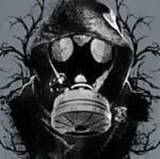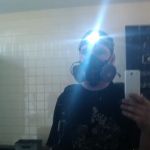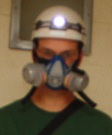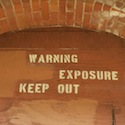 |
 |
|
UER Store
|
|
sweet UER decals:

|
 |
 |
|
Activity
|
|
520 online
Server Time:
2024-04-24 21:58:24
|
|
 |
 Send4Help
     
Location: A biology lab far, far away...
Gender: Male
Total Likes: 485 likes
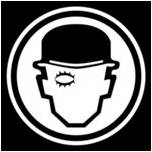
No time for the old in-out, love.
 | |  | |  | Masks & Respirators: Everything you ever wanted to know
< on 4/27/2013 6:32 PM >
| Reply with Quote
| | | Being your wonderful UER resident scientist; here are my thoughts... If this ends up being a tl;dr post the end take home is you arent going to know if they helped you or did nothing until something bad happens. Just like smoking, some people do it all their lives and live to 100, others check out with advanced lung cancer at 25... A very good and well written example of this from a fellow UER member: http://www.uer.ca/...=1&threadid=104366
So here is a ton of info you probably dont feel like reading (Taken from OSHA, NIOSH, NSF, NIH, CDC and CPA standards): THE BASICS: Respirator Material Types Respirators can be made from a variety of materials. The most popular facepiece materials are silicone, neoprene, and rubber. In general, rubber and neoprene are rigid, durable materials. Silicone is preferred for its comfort, flexibility and ease in cleaning. Full-face respirators are available with six-strap harnesses or ratchet suspensions. The harness type can be worn with a hard hat, but ratchet suspensions are generally easier to adjust, making donning and doffing easier. Cartridge Types To determine the proper cartridge for air-purifying respirators, consult the Material Safety Data Sheet of the substance that needs to be filtered. All cartridges are assigned a color designating the type of contaminant they will filter: Cartridge Color: Contaminant
Olive: Multi-contaminant
White: Acid gas
Black: Organic vapors
Green: Ammonia gas
Yellow: Acid gas and organic vapors
Purple: Any particulates - P100
Orange: Any particulates - P95, P99, R95, R99, R100
Teal: Any particulates free of oil - N95, N99, or N100
The medium used as the filter is usually activated carbon. The adsorption capacity of the filter is limited. Particulate Filter Classification The nine classes of filters are broken down into three series: N, R, and P. Each series has three efficiency levels: 95%, 99%, and 99.97%. The efficiency levels are determined by testing the filter with either sodium chloride (NaCl) or dioctyl phthalate (DOP) until a maximum load of 200 mg is reached. Sodium chloride is a mildly degrading material, while dioctyl phthalate is highly degrading. The difference between the three series of filters is found in their limitations and the way they are tested. The N series filter is tested with NaCl, and is used in environments free of oil aerosols. The R series is tested with DOP. A respirator with this series filter should only be worn for one work shift. The P filter is also tested with DOP, but the test doesn't stop at a 200 mg load. The test continues until there is no further decrease in efficiency at the 95%, 99%, or 99.97% level.
PROS/CONS OF EACH SYSTEM Disposable Dust/Particulate Respirators  Description Description: Most single use disposable particle masks (double strapped types) are designed to protect the lungs from nuisance particles as well as certain pneumoconiosis, fibrosis-producing dusts and mists. UE APPLICATION: If you have an allergy to mold, dust, or mildew this would be a must have for any location that you would run into these in high amounts, but dont expect this to do much more than filter those. You are still going to be breathing in nearly the same amount of asbestos, chemical vapor, or organic gases/mists. Advantages: Respirators are lightweight, disposable, relatively comfortable, and inexpensive. Limitations: Disposable dust respirators offer minimal protection due to poor sealing characteristics. They cannot be used by persons with facial hair which comes between the respirator and the skin. These types of respirators are frequently misused therefore make sure you get a proper fit before you head out. Applications: Low concentrations of nuisance dusts, mists, pollen, and animal dust as well as some pneumoconiosis and fibrosis-producing dusts and mist such as coal dust. Air Purifying Half Mask Respirators  Description Description: Air purifying, half mask respirators have a rubber face seal which fits over the nose and under the chin. It is fitted with cartridges which purify the air as the wearer breathes. Different types of cartridges are available for different types of air contaminants. UE APPLICATION: For almost any UE location that has an asbestos warning, chemical warning, or alike... This is the gold standard. HOWEVER, make sure that you are wearing an appropriate filter or you will not be doing anything to protect yourself. Personally, I use a filter that is rated UP-TO AND INCLUDING ORGANICS + VAPOR. This ensures that not only am I filtering out particulate but also any chemicals or organic chemicals that may be in the air. Advantages: Relatively lightweight and offer good protection from many air contaminants. Limitations: Air purifying respirators cannot be used for all types of air contaminants and are limited by the type and capacity of the filters/cartridges used. Protection factors offered by these masks is not as good as that provided by a full facepiece air purifying respirator nor do they provide eye protection. Proper fit is essential and many factors may effect the face to facepiece seal. They cannot be used in oxygen-deficient atmospheres, or in atmospheres which have high concentrations of contaminants. Breathing may become difficult because of the additional effort required to draw air through the purifying media. Applications: Air purifying respirators can be used for protection from a wide variety of respiratory hazards. Cartridges and filters are designed to provide protection against a specific type of hazard. (The types were listed in part one of the post) Air Purifying Full Facepiece Respirators  Description Description: Air-purifying full facepiece respirators work on the same principal as the half-mask respirators described above. The facepiece extends around the entire face, covering the eyes, nose, chin and mouth. UE APPLICATION: Basically, this is overkill. If you are looking for that super rad photo or are deep in the belly of a chemical processing plant that would be the only reason to use one of these. Save your money and go with a lighter more reasonable option. Advantages: Full facepiece respirators provide a better seal and therefore, more protection than half-mask air-purifying respirators. They also protect the eyes and face from irritating vapors, mists, and splashed chemicals. Limitations: Full face respirators are heavier than half-masks and often less comfortable for the wearer. Full face air purifying respirators cannot be used for all types of air contaminants and are limited by the type and capacity of the filters and cartridges used. Eyeglass wearers must assure that temple bars do not interrupt the face to facepiece seal. They cannot be used in oxygen-deficient atmospheres, or in atmospheres which have high concentrations of contaminants. Breathing may become difficult because of the additional effort required to draw air through the purifying media. Applications: Full face respirators are used where a greater degree of respiratory protection is needed or where eye and face protection is desirable.
I hope this gives you a better understanding of the science and applications of the respirator/filter. Though some people swear by them and others swear them off, in the end it is up to you to make the choice for yourself. The effects of exposure are usually not immediately shown and could take years to develop. Choose the path that works for you! Class dismissed, any questions??
[last edit 4/27/2013 7:03 PM by Send4Help - edited 2 times]
|
The Durango '95 purred away a real horrowshow - a nice, warm vibraty feeling all through your guttiwuts. And soon it was trees and dark, my brothers, with real country dark. |
|
Send4Help
     
Location: A biology lab far, far away...
Gender: Male
Total Likes: 485 likes

No time for the old in-out, love.
 | |  | |  | Re: Masks & Respirators: Everything you ever wanted to know
< Reply # 6 on 4/29/2013 2:28 AM >
| Reply with Quote
| | | Posted by ZenCanadian
One other note on this subject... to wear one of these properly means no facial hair... a beard, even trimmed up can allow enough of an opening to let the bad stuff in.
|
Posted by SuchundFind
Depends on the mask, and you can test it as you might know.
|
Technically ZenCanadian is correct. If any of you are Fire I or II certified you will know you cant get certified unless you are clean shaved. There have been many court rulings upholding this (ie: http://aerospace.c...s/FST481beards.pdf). Now lets again put this in perspective, we arent in a situations (usually) that we have hugely contaminated areas where we are exploring. The amount of back-flow that is occurring due to breaks in the skin tight seal arent going to raise your exposure levels by a large amount. They will raise them, but that is another thing that only you can choose if you want to be 95% safe clean shaved or 60% safe with a SHORT beard. Another important example that we all may run into is a cloud of dust or asbestos that we are kicking up in a confined space. This would be a good situation to be wary of having a beard or respirator that is not fitted to our faces. When we create surroundings like that the concentrations that are ambient environment are much more concentrated. Thus the amount of particulate that can penetrate the mask are much higher. I would venture to say that in this situation the amount of leakage you would intake, due to the beard breaking the seal, would be the same amount that you would inhale if you were not wearing the respirator in a normal abandoned enviroment (still SIGNIFICANTLY less that it would be not wearing the respirator at all in the aforementioned dust cloud). Edit: Added quote
[last edit 4/29/2013 2:49 AM by Send4Help - edited 2 times]
|
The Durango '95 purred away a real horrowshow - a nice, warm vibraty feeling all through your guttiwuts. And soon it was trees and dark, my brothers, with real country dark. |
|
Send4Help
     
Location: A biology lab far, far away...
Gender: Male
Total Likes: 485 likes

No time for the old in-out, love.
 | |  | |  | Re: Masks & Respirators: Everything you ever wanted to know
< Reply # 10 on 5/3/2013 12:28 AM >
| Reply with Quote
| | | Posted by SuchundFind
Ok, I am just NBC certificated, I am also certificated to test NBC masks.
As the armed forces most of the times are above any court rulings, I don't know any of them and really don't care about them.
|
We arent talking about NBC protection here. We are talking about civilian systems and the ratings that are available to the average person. There are no currently available systems that are approved with for persons with beards or facial hair. If we were a military forum then your statement would be true, but the purpose of this post and the reason it was pinned, is because it is tailored to the average urban explorer looking to properly protect themselves.
|
The Durango '95 purred away a real horrowshow - a nice, warm vibraty feeling all through your guttiwuts. And soon it was trees and dark, my brothers, with real country dark. |
|
Send4Help
     
Location: A biology lab far, far away...
Gender: Male
Total Likes: 485 likes

No time for the old in-out, love.
 | |  | |  | Re: Masks & Respirators: Everything you ever wanted to know
< Reply # 12 on 5/25/2013 11:28 PM >
| Reply with Quote
| | | Posted by CatAndTie
Is a short beard considered stubble or 5 o'clock or more like a trimmed beard? My stubble comes through quick, so does that mean I am leaving a gap big enough to affect my mask?
|
Simple answer... Maybe? The best thing to do is to try a simple breathing test... Take off the filters of the mask and cover the inlets of your mask with your palms (or plastic wrap, etc) to stop the intake of air. Without putting on more pressure then the straps would normally push against your face try to breath in. If you feel/hear air coming in around the mask/beard area then you should consider a shave, if not you are probably just fine. The actual standards would normally call for a clean shave, but again, we arent really dealing with something that is going to be affected by an extra 5 parts-per-trillion that can slide in under a mostly closed system.
[last edit 5/25/2013 11:29 PM by Send4Help - edited 2 times]
|
The Durango '95 purred away a real horrowshow - a nice, warm vibraty feeling all through your guttiwuts. And soon it was trees and dark, my brothers, with real country dark. |
|
Whitecat
 
Location: Belgium
Gender: Male
Total Likes: 1 like
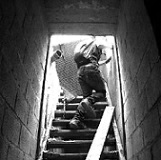
 | |  | |  | Re: Masks & Respirators: Everything you ever wanted to know
< Reply # 13 on 5/30/2013 9:08 AM >
| Reply with Quote
| | | I would like to add something for those living in most parts of Europe. The filter rating system here is slightly different, I've seen this specific system used in Belgium, the Netherlands and the UK, but since it is the European standard it's possible there are more countries that use this system. Basics
- P - Particulate
- A (Brown) - Organic gases and vapours
- B (Grey) - Inorganic gases and vapours (NOT carbonmonoxide)
- E (Yellow) - Sulphur dioxide and acidic gases and vapours
- K (Green) - Ammonia and organic ammonia derivatives
These all use a rating from one to three, with three giving the best protection. For example, you can buy a filter type A2P3 and that will give you the best protection against particles and a reasonable protection for organic gases.
Particles: extra information The ones most of you will be needing are the P filters. Important to note is that only P3 filters will protect you from asbestos.
- P1: 80% of airborne particles, only for non-harmful dust
- P2: 95% of airborne particles, harmful dust
- P3: 99.95% of airborne particles, toxic/poisonous/otherwise harmful dust (asbestos, viruses, spores, ...)
Warning FFP is not the same as P. FFP masks have a lower standard, allowing inward leakage of up to 22% for FFP1 masks. I do not advise these, but they are at least way better than nothing. Special filters Where the hell are you going that you're gonna need these?
- AX - organic gases and vapours, boiling point below 65°C
- NO-P3 - Nitrogen oxides (max time = 20 min.)
- Hg-P3 - Mercury vapours (max time = 50 hours)
- CO - Carbonmonoxide
- Reactor P3 - Radioactive iodine
Conclusion P3 filters are probably the best for most locations. When going to a place where various gases might be present, you might want to bring an ABEK filter, which combines the four categories of gases. (Also labeled as A1B1E1K1 etc.) I hope some of you might find this European add-on helpful!
|
...still I venture some place scary. |
|
Send4Help
     
Location: A biology lab far, far away...
Gender: Male
Total Likes: 485 likes

No time for the old in-out, love.
 | |  | |  | Re: Masks & Respirators: Everything you ever wanted to know
< Reply # 15 on 6/8/2013 7:32 PM >
| Reply with Quote
| | | Posted by SuchundFind
So where are again is the big difference between the soldier in the field and the urban explorer?
|
Go back and read the thread again. I have no idea what you are talking about. The question was asked about beards and facial hair, I answered in the technical black and white answer of, "no currently available systems that are approved with for persons with beards or facial hair." Then another question was asked specifically about people with fast growing beards and how to test them, I answered that with the mask testing procedure. Again, I dont follow your logic other than you are somehow offended at something that doesn't exist... Keep the thread on topic and if you want to PM me about another issue, please feel free to.
|
The Durango '95 purred away a real horrowshow - a nice, warm vibraty feeling all through your guttiwuts. And soon it was trees and dark, my brothers, with real country dark. |
|
Therrin
    
This member has been banned. See the banlist for more information.
Location: North of Chicago, IL
Gender: Male
Total Likes: 279 likes

*Therrin puts on the penguin-suit
 | |  | |  | |  | Re: Masks & Respirators: Everything you ever wanted to know
< Reply # 16 on 6/12/2013 1:00 AM >
| Reply with Quote
| | | Posted by SuchundFind
Actually this is how the soldiers test there masks every time they get them ready. So where are again is the big difference between the soldier in the field and the urban explorer?
|
I think you're missing the point entirely. (oh, and the armed forces aren't "above" court rulings. Ignoring civilian procedure doesn't just make you 'better' arbitrarily) I think Send4Help is saying that for the COMMON, CIVILIAN explorer, it is "not recommended" to have a beard while wearing a mask, but that each person needs to take into consideration the hazards they face and choose accordingly; with the caveat that there is some grey area. If you were trained to do something in the military, then you should know that you were trained to do it with SPECIFIC equipment which is inspected and cared for in a SPECIFIC way, and likely documented. Any COMMON CIVILIANS who do not have your "training" and are not using the SPECIFIC devices and procedures that you were trained to, do not fall within the realm of your argument. But by all means, do as you please  In the diving world, when I have a mustache I use some silicon grease on it to ensure a better seal on my face mask. Depending on the hazards you may encounter with a half-mask and short beard, I would imagine you could do something similar. Silicone or vaseline or some such, in order to assist your mask to have a better air-tight seal, if you were so inclined. This would also help to trap any contaminants en-route through your beard before they get to your lungs.
|
Give a person a match and they'll be warm for a minute, but light them on fire and they'll be warm for the rest of their life. =) |
|
|

| This thread is in a public category, and can't be made private. |
|
All content and images copyright © 2002-2024 UER.CA and respective creators. Graphical Design by Crossfire.
To contact webmaster, or click to email with problems or other questions about this site:
UER CONTACT
View Terms of Service |
View Privacy Policy |
Server colocation provided by Beanfield
This page was generated for you in 359 milliseconds. Since June 23, 2002, a total of 738967914 pages have been generated.
|
|










